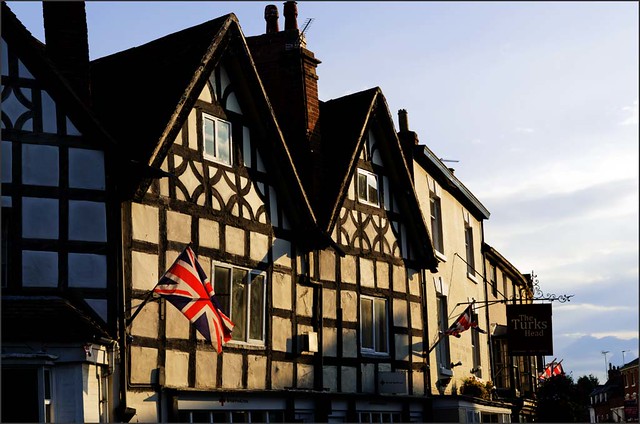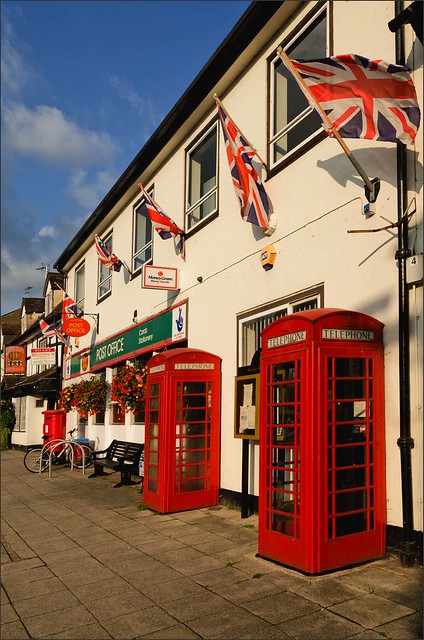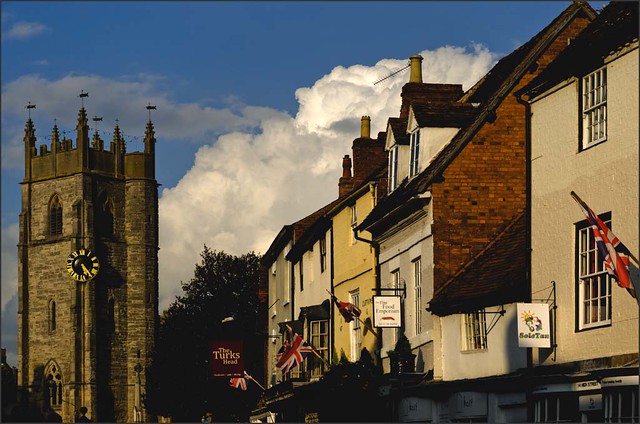Alcester with D7000
Nikon D7000 16-85mm zoom lens
Alcester is a town not far from where I live. On Sunday the sun appeared finally in the late afternoon and since we were going out to a meal with friends nearby, I decided to grab the D7000 and take a few shots on the way, in what turned out to be very nice evening light.
Nikon D7000 16-85mm zoom lens
The main street has a lot of half-timbering and "olde-worlde". It is however like most towns these days, full of parked cars and it can often be difficult to get angles that show the historic old buildings off to their best advantage.
Nikon D7000 16-85mm zoom lens
It is also one of the most patriotic towns I've seen with Union Jacks on poles lining the street.
Nikon D7000 16-85mm zoom lens
Nikon D7000 16-85mm zoom lens
The D7000 is my current "camera of choice" and with the 16-85mm zoom proved extremely useful.
Pentax 645D raw files and interpolation
There's a link on 1001Noisy Cameras - http://www.1001noisycameras.com/2011/09/flagship-wars-nikon-d3x-vs-pentax-645d.html which leads to a comparison between a Nikon D3X and a Pentax 645D. There's also another link which leads to some raw samples from the camera - http://www.1001noisycameras.com/2010/08/pentax-645d-realworld-dng-samples-uk-decision-still-coming.html including one particular image of a steam train.
It is quite spectacularly sharp. The camera has no AA filter, and when I first processed the .DMG file in Photoshop it had a lot of moire and CA. However there is a camera / lens preset in Adobe Camera Raw which removes the majority of it, and produces a quite extraordinary file. I've often toyed with the idea of selling everything else and buying a 645D, with just the 55mm lens. I used a Pentax 645 film camera for years, and always liked it. It was a hand holdeable MF camera that worked like a big DSLR and was a great favourite of travel and stock photographers.
The thought of buying one again has occurred to me again, since until the end of September there is a 10% cashback on the 645D, which would bring the camera and lens down to a "bargain baesment" £8730!!! The one lens wouldn't be that much of a problem, since you can crop into these files and still produce a huge high resolution file. Though to buy this would mean selling a great deal of what I have already.
However, two things put me off. Firstly the weight, Its actually heavier than a D3X. I used to haul one these and three lenses everywhere, and used to think that it was quite light, which shows how things have changed! Secondly, some of the pictures from the 55mm lens had quite soft edges.
I then had a look at one of my Leica M9 files blown up to the same size (113MB) as the Pentax image that had so impressed me and I realised that there actually wasn't that much difference between them.
I then decided to have a look at some other files and was quite surprised as to what size I could make them before they started to look bad. I was able to upsize G3 and D7000 files quite dramatically and they still looked fine. Bags of detail and still very sharp.
Olympus are currently advertising their new 45mm f/1.8 lens with A3 double page spreads in UK photo magazines, and they do look very impressive indeed, with what is an interpolated file, since Pen cameras don't produce A3 size files unless you upsize them.
A few years ago, I was upsizing all my digital camera files for picture libraries, since they required larger sizes than the cameras at the time were capable of producing, and everybody, including clients, seemed quite happy with this. I think we sometimes forget just how big some of the files that we shoot can be printed. Pixel-peeping on a computer screen, we can see all kinds of minor differences between files, but making prints and published files often make that difference far less significant.
The great advantage of files with lots of MP's and files from MF cameras is the ability to crop into them. I've always got round that by shooting a range of images with different lenses, to give clients the choice they want without having to crop.
Interpolation is often "frowned upon" but it still happens all the time, particularly in publishing and if done carefully, with a good initial image, often works very well. It can enable us to use the camera we like without having to constantly feel that we need to upsize our MP count, and its often said that you probably have to double it to notice any real difference. I'm not sure thats true but there is far less difference between 12MP and 16MP than many would have us believe.
"Its not the size, its the quality" is of course true, and the quality of the sensor and lenses is of course very important. The Pentax 645D produces amazing files, but then so do many of the cameras I own already. They also offer me a lot more flexibility and provide the opportunity to get pictures that I would never be able to get with the 645D.





